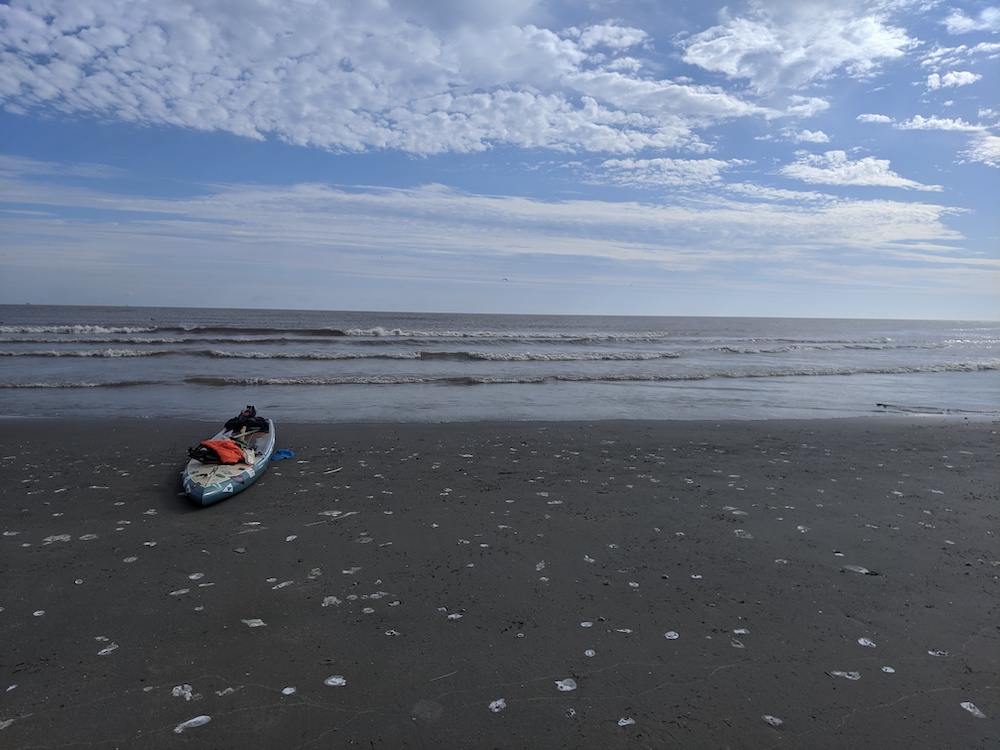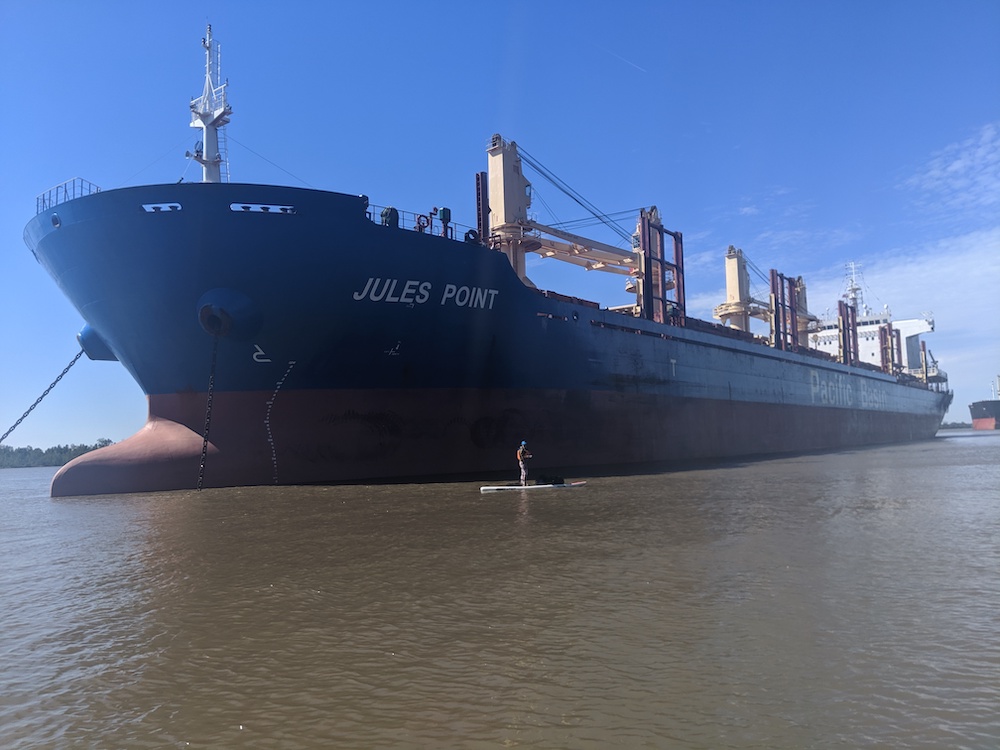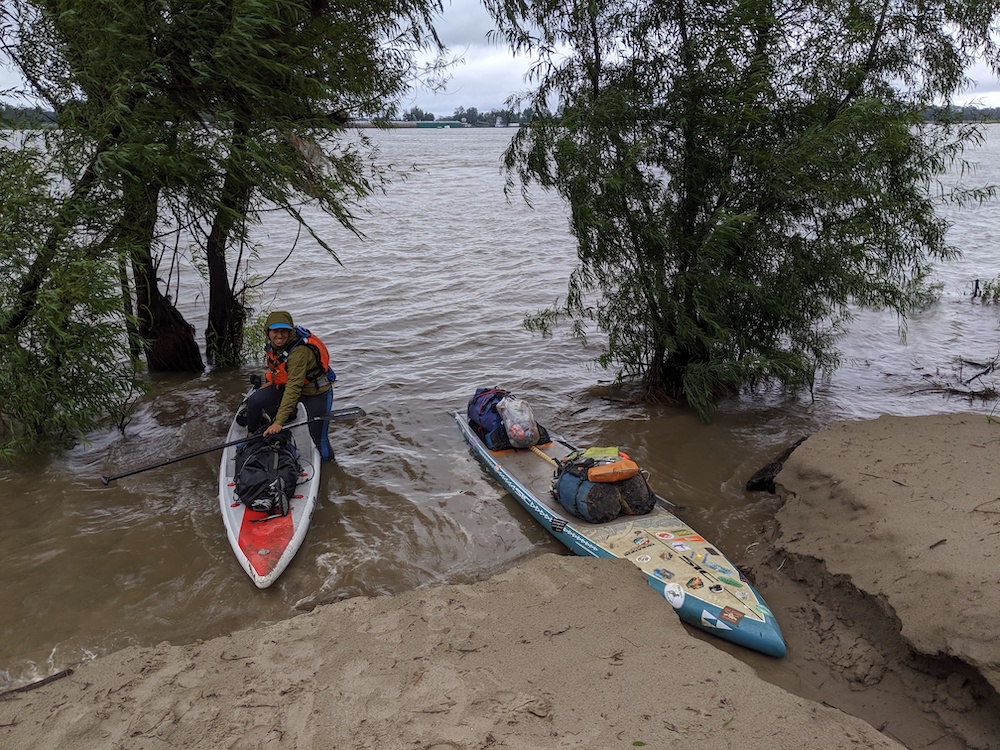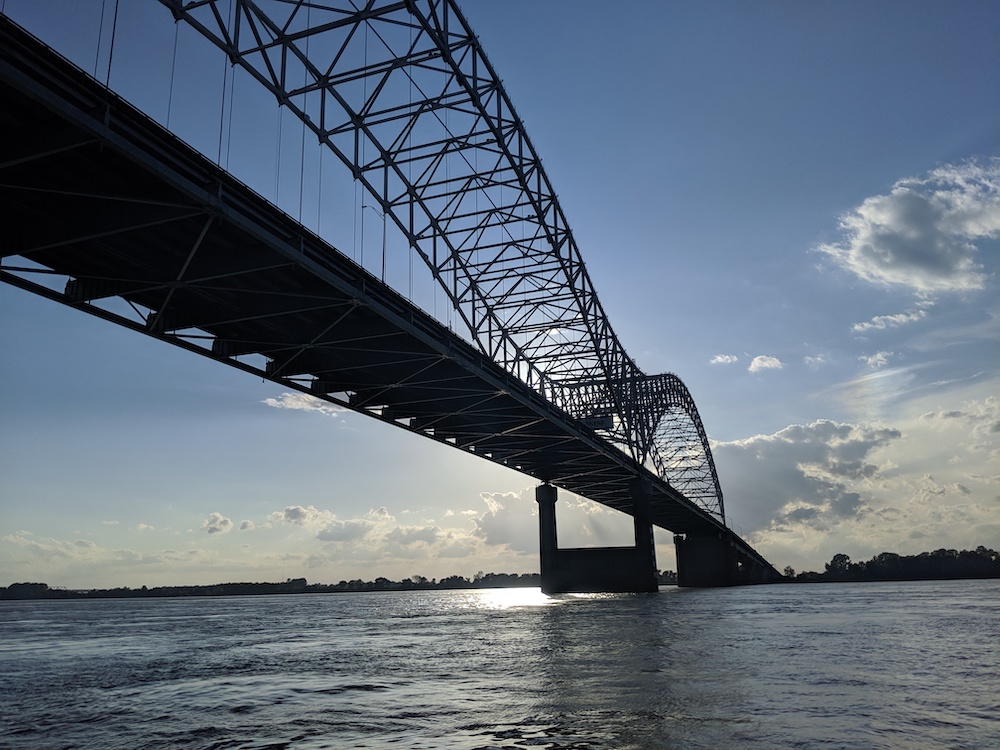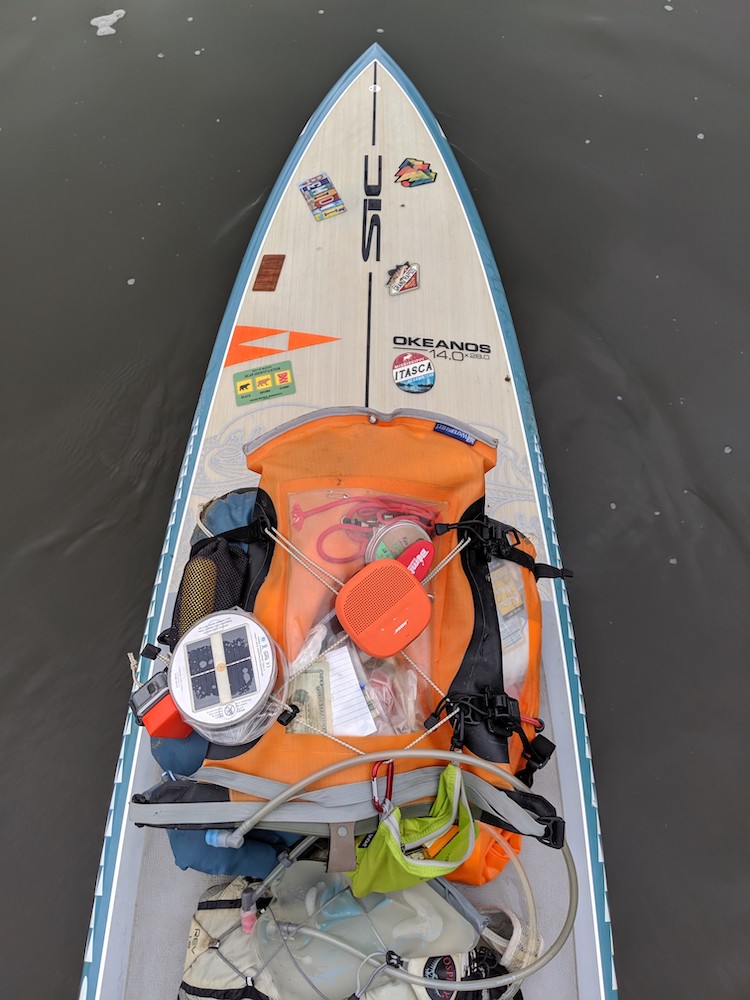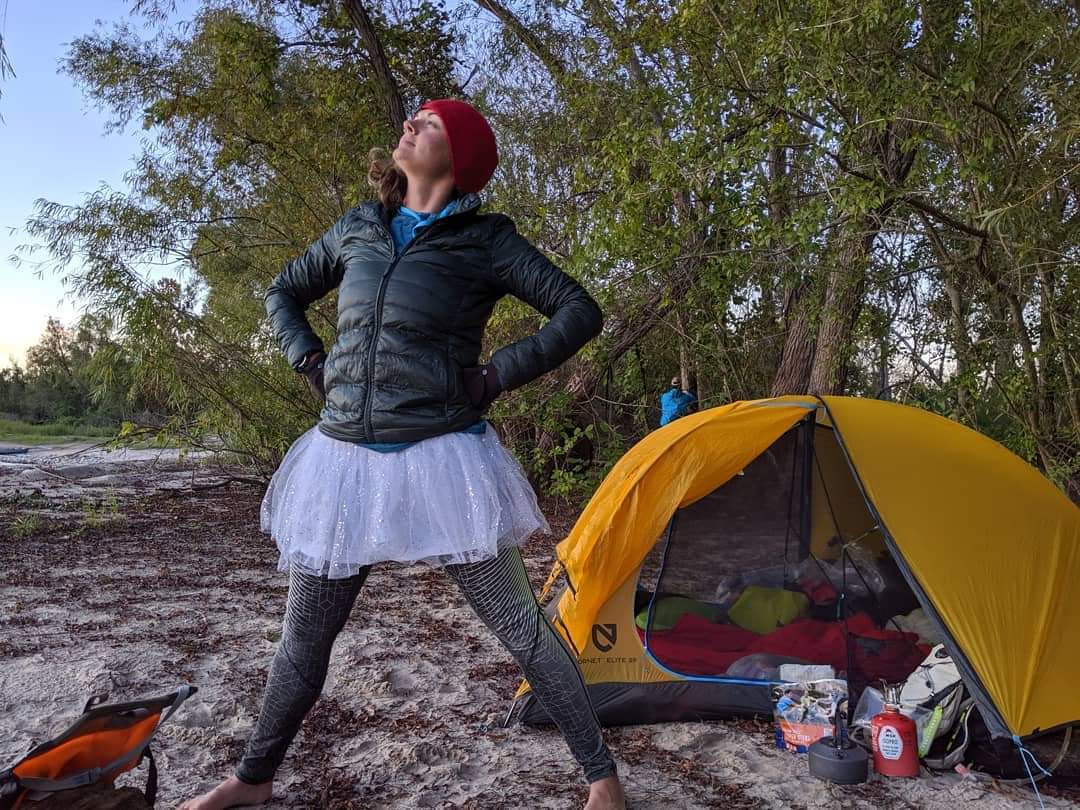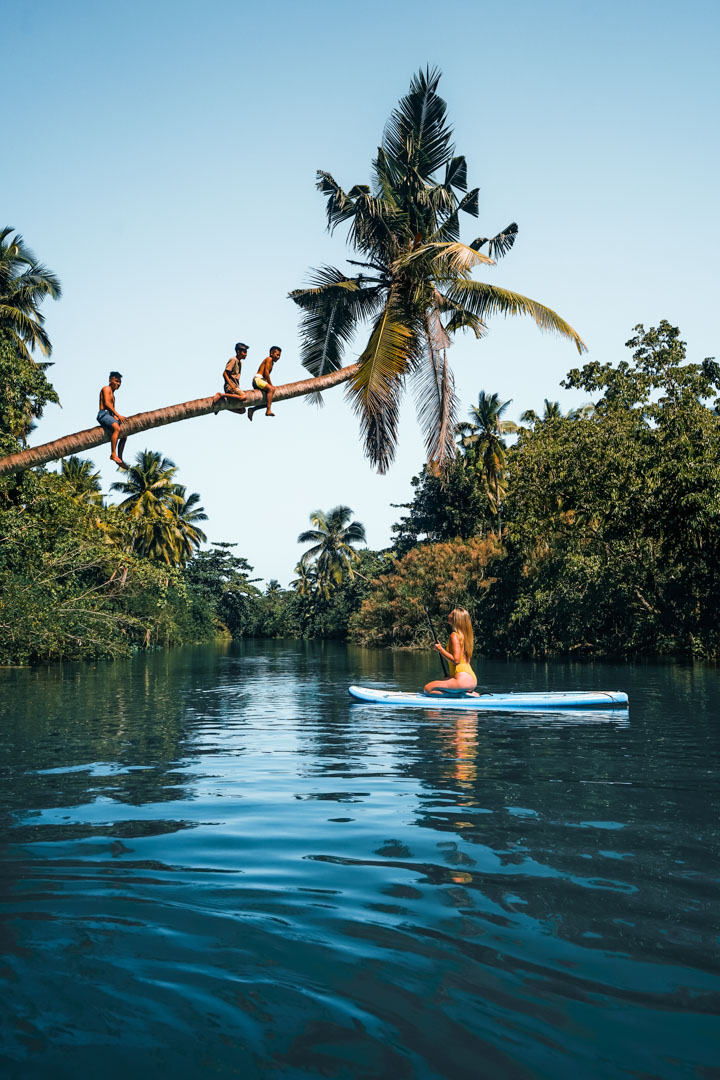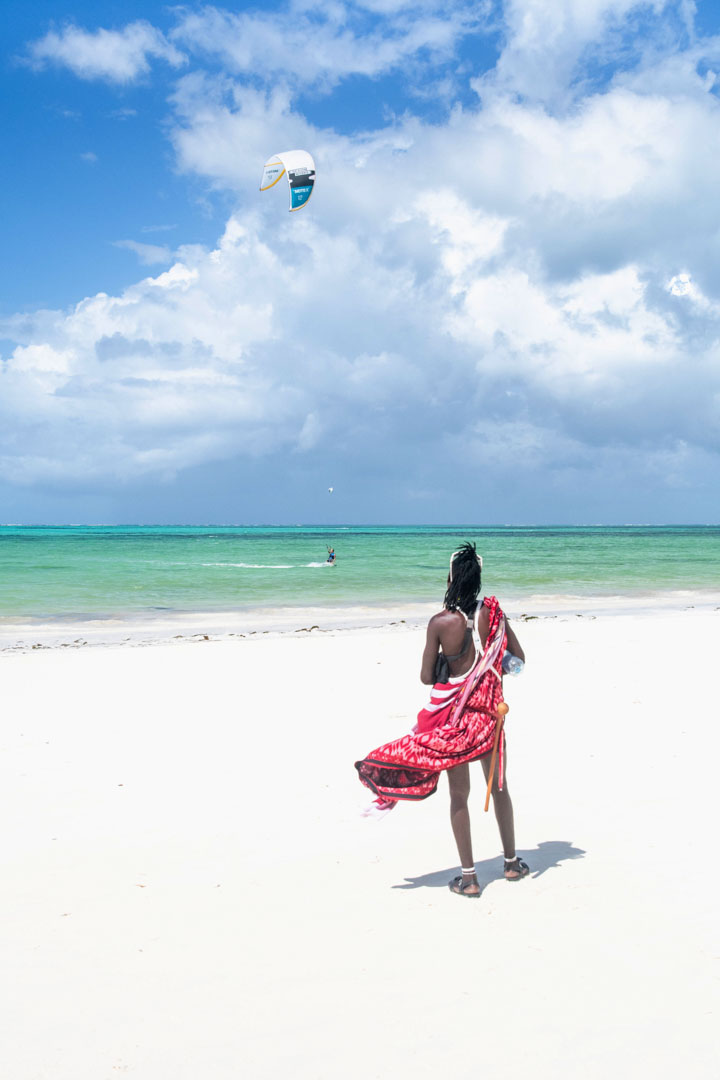Why the Mississippi River?
LouAnne Harris is no stranger to SUP expeditions. As an instructor at the Manhattan Kayak Co in NYC, she and fellow paddler Julieta “Jules” Gismondi paddled from Manhattan to Miami in 2015 covering a span of 15,000 miles in four months. They raised over $16,000 on that trip for two charities: Mission Blue, dedicated to the exploration and conservation of oceans; and First Descents which provides outdoor adventures to people who have been impacted by cancer.
During this trip, the duo were dubbed - and aptly so - the Atlantic SUPer Girls. The name stuck.
So, it had been a few years since LouAnn’s last great adventure and she had been considering a solo trip for some time. As a New Yorker, paddling the Hudson from source to sea was a possibility, but LouAnn was also interested in The Great Loop. The Great Loop is a system of waterways that encompasses the eastern portion of the United States and a portion of Canada made up of both natural and man made waterways including the Atlantic, Gulf and Intercoastal Waterways, Great Lakes, Rideau Canal, and the Tennessee and Mississippi waterways. The Mississippi River is a part of that Great Loop. A friend of LouAnn’s was on the Mississippi River last summer, and when LouAnn asked him about it as a possibility for her excursion, he was the deciding factor, urging her to do it.
Mississippi River from Source to Sea: 2,400 miles
LouAnn Harris launched her expedition on August 11th, 2019 in Lake Itasca, Minnesota. Lake Itasca is a small, glacial lake (1.8 sq.miles in area), and is notable for being the headwaters of the mighty Mississippi. She paddled two thousand, four hundred miles, through 10 states, to finish 100 miles downstream from New Orleans, Louisiana, on the Gulf of Mexico’s South pass on November 4th, 2019. Total time: 82 days or 4 ½ months on the water, most of that solo.
How did you prepare?
“I tried to train a little bit. I’m lucky enough to work on the water as a guide & instructor at Manhattan Kayak Co. on the Hudson River, so I get a lot of training in my daily routine. My biggest prep was when I finally got my SIC Okeanos board. I wanted to make sure it would do well in wonky river conditions so I took it to the East River in NewYork City from Hell’s Gate to City Island. I wanted to test it with a lot of weight on it since I would be carrying a full load on the Mississippi. So I piled a bunch of kettlebells and medicine balls on board to see how it would manage in turbulent water. It did all right! That was my biggest test.
Why did you choose August 11th to start your journey?
I didn’t want to paddle the Mississippi in cold weather or in the midst of the mid-summer heat. Late summer seemed optimal, plus I wanted to time it around Chattajack in order to be part of that race as well. We decided that I would take a break, head over to Tennessee for Chattajack and then Jules would come back with me to finish out the Mississippi. Latitudinally, that would be closest to the end. Of course, I wanted Jules to be there for the finish. She paddled with me the entire last week to the Gulf.
How did you resupply?
Mostly, I packed those freeze dried meals. I had almost two months worth with me on the board. If there was access to a town during one of my stops, I would resupply on fresh stuff like oranges, apples, etc. Living on the freeze dried stuff gets kind of old. I’m fortunate that my sister lives outside of St. Louis, which is roughly the halfway point on the river. I organized my trip to resupply when I was near her. It was great.
What was your greatest challenge?
Surprisingly enough, my greatest challenge wasn’t natural but man-made. I thought the greatest challenge would be the river itself because it’s the Mississippi River. Instead, what I found to be the greatest hurdles were navigating all of the dams, dykes and spillways I had to pass through.
With 100-120 pounds of gear on my paddleboard, plus the fact that I could not access through the locks and dams, I had to portage through a lot of tricky crossings. Apparently the Army Corps of Engineers never thought to make portage paths around the locks and dams on the Mississippi and, as there were restrictions against paddle boards with no special exceptions allowed, I found there were more risks in carrying my board & supplies up and over the dams instead of just being able to lock through them.
The crews at the locks and dams were amazing. Almost always, they were willing to help me portage my supplies and my board around the dam. So overall, the man-made restrictions and structures were the most challenging.
What was your heaviest ‘Oh sh*t!’ moment?
Well, there I was, going around another lock and dam. Some, instead of having a dyke, had a spillway. There had been a few big storms while I was out there on the river, so the water table was pretty high. The crews told me that if the river flow was high enough and the spillway was full, I should be able to scootch right over it. On most spillways, the water was level on both sides, but on this one, I saw that one side was flooded.
As I approached the spillway, I could see the turbulence on the other side of it, but I was going too fast to stop. At that point, you’re in it. There’s nothing you can do. So I sat down, lined up to hit it directly and paddled like mad to get over the spillway. The fins scraped along the concrete as I went up and over. On the other side, the current spun me around so my board was parallel to the dam in the middle of the flow. I had to kick the concrete of the dam to push off and get through.
After I managed to squeak through that spillway, I immediately got off the water. Normally, I would have kept going, but after that I was like, “Nope, I’m good for today. I want to get off the water.” I was alone when that happened. It was pretty hairy.
Tell us about your moment of arrival, having completed the entire 2,400 mile paddle on the Mississippi River.
Jules joined me for the final week of paddling after Chattajack in October. She jumped on in St. Francisville, Louisiana and we paddled that entire last week together. Of course, I wanted her there.
It was really weird and intense to complete the journey. I had this huge mix of emotions. On one hand, I was so excited to have accomplished my goal; I’d done it! But, on the other hand, it’s hard to let it go. The existence out there is so simple and wonderful. I felt deeply connected to nature. So I was sad at the same time. I did it, but now it was over. I wouldn’t get to watch the sunrise from my tent with a cup of coffee for another day, or paddle through the sunset again. I would miss living like that.
Why did you choose Rivers of Change as your fundraiser?
Rivers of Change has a great crew based in California. They offer Source to Sea microgrants. I applied for one and received a grant. What people don’t realize is what expeditions like this cost. I needed to fund my trip but I also wanted to help by giving back to those guys who gave me the grant. They do a great job bringing awareness to waterways from source to sea. Most people don’t realize you can be proactive about your local waterway, and that’s great, but you need to consider ALL of the water, not just what’s in your own backyard. My fundraiser through Rivers of Change allowed me to give ⅔ to the organization and use ⅓ of the monies raised to support my expedition.
When Jules and I paddled from Miami, we collaborated with First Descent and Mission Blue. These organizations make it possible to do things like this.
Any words of wisdom to folks who might be dreaming of their own expedition?
I do think that expeditions like this are really cooI. I hope that my paddling the Mississippi will inspire others to do some of the things that have been tickling their brains. If I have anything to say, it’s just “Go!”
People should know that in order to plan & accomplish an expedition like this, there are costs. You don’t get to go launch a big trip like this without sacrificing something else to do it. I’m lucky. My life is organized around the water so that I’m able to take off on journeys like this.
If you really want to do something different, like go on a paddle journey, at some point you have to decide how much you want to do it and look at the risks and sacrifices. If you know it’s going to nag you for the rest of your life if you don’t do it, then go. You can’t trade experiences like this for anything.
It’s so much easier for us to talk ourselves out of doing things than to really acknowledge how important it is to us. I hope that my paddling the Mississippi will inspire others to motivate. I hope it inspires you to go.
Final Thoughts?
I am always amazed at the warmth and community of water people. The Mississippi River has ‘River Angels’, groups of people who are there to help paddlers along the river. There is so much love and stoke in the paddling community. It really restores my faith in humanity when - after a hard, icky, everything-goes-wrong, kind of day - you pull up to a dock or beach and are embraced by people who are so stoked and want to be involved in what you’re doing. It lifts you up. It gives you back that energy to keep you moving forward. It’s these people who help you to keep going.

